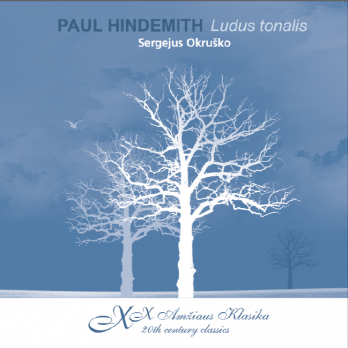

His fam of a high technical level and feature great originality of expression. Although Hindemith was a violist, not a pianist, he knew his way around the piano well: he was a keen multi-instrumentalist, and often performed at the keyboard. This record contains the complete works written by German musician Paul Hindemith (1895–1963) for piano duo, both his compositions for piano four hands and for two pianos. The two duo sonatas are no less impressive in their variety and compositional richness.
#Hindemith ludus tonalis pdf full
In his Symphonie ‘Mathis der Maler’ he transfers the full multi-layered density of his majestic symphony’s orchestral writing to the keyboard with painstaking accuracy. The final three compositions leave that sarcasm behind. Ragtime (wohltemperiert) epitomises the biting parodies and derisivecaricatures that were all the rage in the art world in the early years of the Weimar Republic. The collection of 8 Walzer were composed at the height of World War I, and there is a clear feeling of mournfulness in them, the seventh in particular written in a spiky, polytonal and polyrhythmic language that is both innovative and tragic. The final three works, on the other hand, present a fully mature composer with a gift for balanced construction: his piano reduction of the Mathis der Maler Symphony (1934), itself a condensed predecessor of the opera of the same name, and the two Duo Sonatas, for piano 4-hands (1938) and for 2 pianos (1942). While the Walzer of 1916 are an output of Hindemith’s early training in composition, by 1921 his Ragtime (wohltemperiert) already reflects an early-mature period during which he sought to define a personal style of his own that could be openly abrasive and irreverent. Hindemith’s compositions for piano duo, while few in number, are significant and spread across the span of his career, providing snapshots of his various compositional phases. Even if he doesn’t immediately spring to pianists’ minds, he deserves to be included – alongside Debussy, Schönberg, Ravel, Stravinsky, Bartoìk and Prokofiev – in the small group of innovators who significantly enhanced the piano repertoire in the early 20th century, Hindemith in particular with his Suite 1922, three solo piano sonatas and Ludus Tonalis. While Hindemith was foremost a violist, not a pianist, he knew his way around the piano, and this familiarity is reflected in his compositions for the instrument, all of a decent technical level and featuring great originality of expression.

This record contains the complete works for piano duo (piano 4-hands and 2 pianos) by Paul Hindemith (1895–1963).


 0 kommentar(er)
0 kommentar(er)
